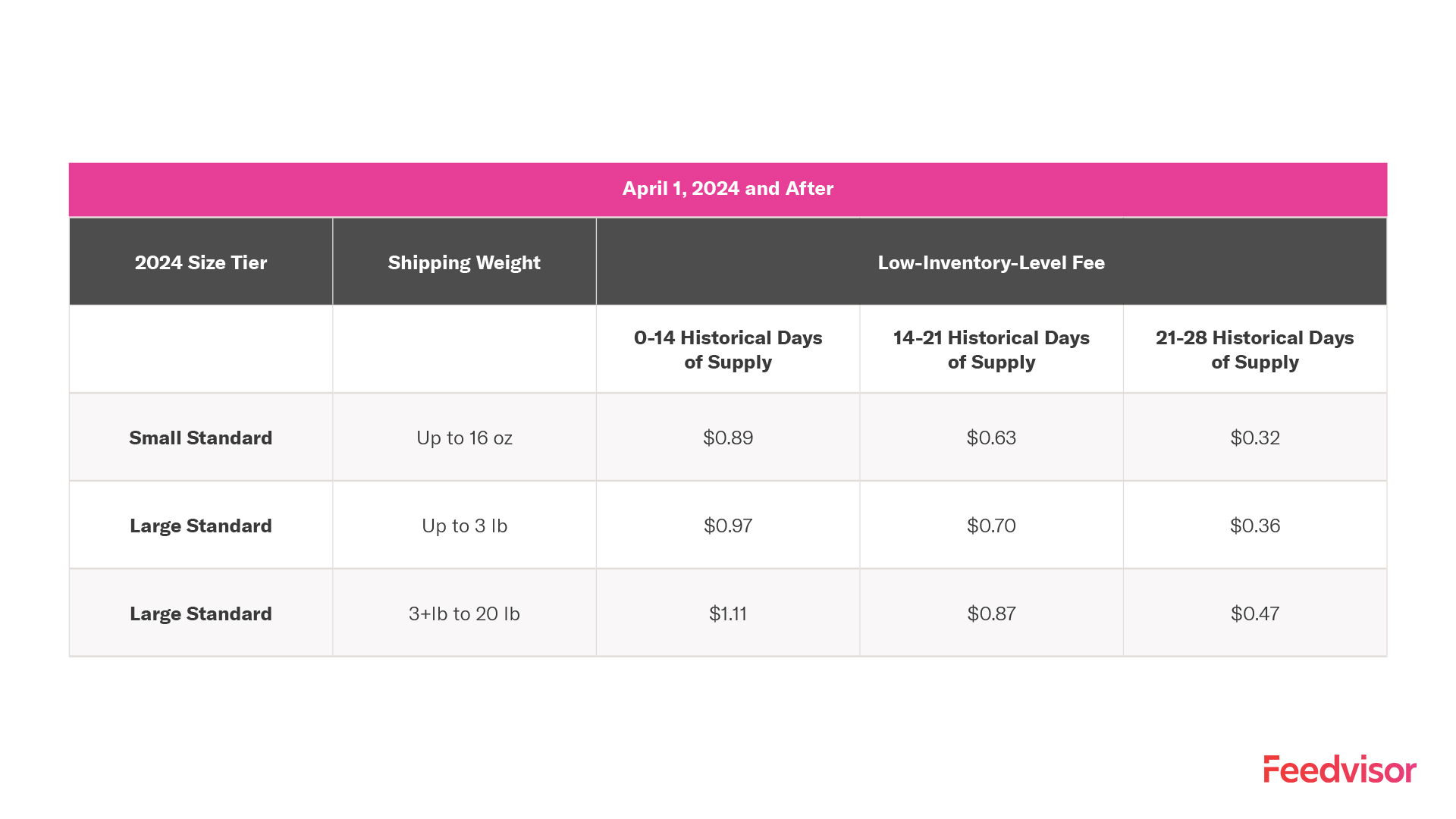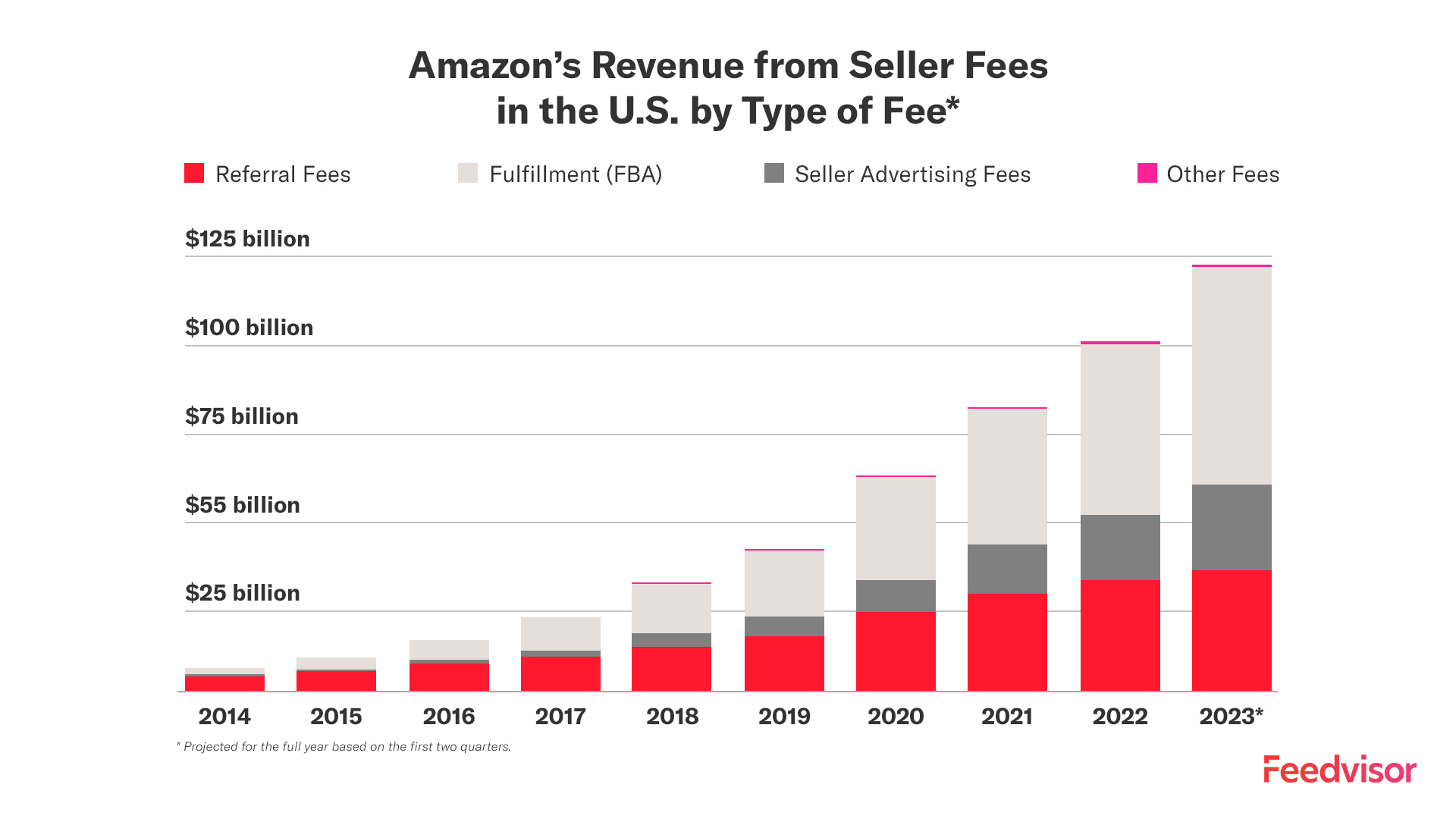Resources - Blog
Amazon’s Low-Inventory-Level Fee: What It Is and How To Manage it

The recent implementation of the low-inventory-level fee has sent shockwaves through the Amazon seller community, igniting new concerns and apprehension.
Historically, overstocking has been the biggest cause for concern. The new low-inventory-level fee changes this. The fee penalizes sellers for having too little stock, adding another layer of complexity to inventory management and necessitating sellers strike the right balance between too little and too much inventory — a delicate act comparable to walking a tightrope.
Amid reports of Amazon deducting 45 cents from every dollar earned through third-party sales, it has become crucial for sellers to safeguard profits against a surge in complex, costly storage fees. We’ll explore what the low-inventory-level fee means for sellers and how AI-powered repricing technology can enable sellers to take a proactive, more efficient approach to their inventory management.
Low-Inventory-Level Fee: Explained
The newly introduced low-inventory-level fee, effective from April 1st, comes with some important details to keep in mind:
- The fee is applicable only to standard-sized products and is triggered by consistently low inventory levels.
- It applies specifically to standard-sized products when both their long-term (last 90 days) and short-term (last 30 days) historical days of supply fall below 28 days.
- Amazon calculates days of supply based only on the sellable inventory in their warehouses (including sellable, in-transfer, and reserved items), excluding any inbound inventory.
There are three thresholds to note: the fee increases as your days of supply decrease. 
How is it calculated? Days of supply are calculated at the parent level, which offers sellers some relief. For instance, if one or two variations sell rapidly and frequently run low on stock, the presence of other variations with higher inventory levels helps balance the calculation.
The fee itself is determined by the historical days of supply over the last 30 and 90 days, using the higher value to assess if your product falls below the threshold.
Why implement it? This fee aims to incentivize sellers to optimize their inventory management and streamline the distribution process within fulfillment centers. By targeting instances where sellers maintain insufficient inventory compared to unit sales, it aims to prevent bottlenecks in Amazon’s FBA network, ensuring timely and cost-effective distribution of products.
Yet while the recent introduction of fees may enhance Amazon’s efficiency in distribution and supply chain management, it poses challenges for sellers. While fees are a necessary aspect of business, they can significantly eat into a seller’s profits.

This additional fee exacerbates the already existing strain on sellers’ bottom lines, heightening the threat of costly storage fees that could drain their profits. Sellers must navigate through a multitude of fees beyond the low-inventory-level fee, including:
- High-returns processing fee: A charge on high-return rate items across all categories, except apparel and footwear, aimed at covering operational expenses associated with returns and minimizing waste.
- Inbound placement fee: A fee aimed to offset Amazon’s expenses in distributing products across fulfillment centers nationwide.
- Storage Utilization Surcharge: A charge incurred when a seller keeps inventory units in an Amazon warehouse longer than 26 weeks,
- Aged Inventory Surcharge: A monthly charge assessed using an inventory snapshot on the 15th day of each month. The Aged Inventory Surcharge is only charged on inventory units stored in an FBA center longer than 180 days.
Want to Avoid The Low-Inventory-Level Fee? Strike the Right Balance
While it’s tempting to attribute the issue solely to fees, the real culprit draining profits is more often a lack of attention to inventory health and levels. Addressing the root cause of the problem, rather than just the symptoms, is crucial to preventing fees from accumulating and becoming a larger issue over time.
Considering this, maintaining a vigilant eye on your inventory levels becomes paramount. Failure to closely monitor demand shifts can result in fees escalating exponentially — consider the following scenarios below when inventory levels fall out of balance.
Too Much Inventory
Imagine that low Buy Box visibility is slowing your sales and hindering product movement. While you’re conscious of the looming risk of excess charges due to inventory health, you’re uncertain about the strategic steps needed to rapidly generate and convert more demand before incurring additional fees. You need a solution that maximizes your Buy Box visibility and evaluates price elasticity to pinpoint the optimal price for increased demand, ultimately boosting sales velocity and expediting inventory turnover.
Too Little Inventory
Now imagine you’re dealing with unexpectedly high demand for your product. Knowing you need to replenish your inventory quickly, the challenge is determining the right reorder quantity. Adding to the complexity, the new inventory may not be readily available. You need a proactive solution that prevents a significant stock shortage without disrupting your sales flow.
Just Right
In both scenarios, the crux is optimizing inventory velocity. Given the multitude of factors at play, sellers must automate the process and respond promptly. But while many solutions offer data, the missing link is actionable real-time strategies per Asin that only AI can achieve — truly optimizing the pace at which your products move. Navigating Amazon’s latest fees is no longer about responding to market changes; it’s about predicting and influencing those changes.
This is where Feedvisor’s advanced repricing technology comes into play, going beyond simple insights to empower sellers with actionable strategies. With its latest update, Feedvisor has enhanced its prowess in optimizing pricing and profitability by now factoring in the pace of product sales. The result: Sellers are able to fine-tune their price velocity, preventing inventory issues.
By merging smart algorithms, competitive signals, and real-time inventory insights, Feedvisor’s inventory-aware AI repricer swiftly adapts to market shifts, intelligently adjusting prices in real-time to discover the optimal point for achieving the desired level of sales and inventory velocity, including:
- Slowing down sales to avoid stock depletion.
- Identifying the optimal price point to boost demand, accelerating sales velocity for quicker stock turnover.
Even better, Feedvisor’s repricer employs a proactive strategy by anticipating potential inventory issues, allowing sellers to resolve them beforehand. Feedvisor’s AI repricer not only identifies when your items are nearing specific thresholds but also predicts when you might reach those thresholds before any charges are incurred — enabling sellers to prevent additional fees altogether.
Feedvisor’s inventory-aware AI repricer stands out as one of the most advanced options available. Unlike many rule-based repricers, Feedvisor doesn’t simply adjust prices to match competitors. Instead, Feedvisor’s powerful repricing solution goes beyond grasping price elasticity nuances. It considers market dynamics and inventory levels at a granular level, enabling it to intelligently adjust prices to avoid fees — all the while still maximizing your margins and selling at optimal prices.
Final Thoughts
Predictive and influential approaches are paramount in the dynamic landscape of Amazon’s fees. Feedvisor’s AI-based repricing solution, focusing on market dynamics and granular inventory levels, positions sellers to navigate these changes successfully, cut fees, and boost profits in the ever-evolving world of e-commerce. See it in action with a free, 14-day trial of Feedvisor’s industry-leading repricing platform.

